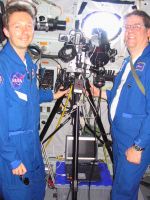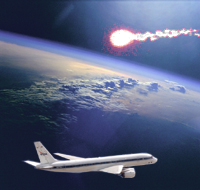
 Dr. Jason Hatton,
Dr. Jason Hatton,
ESTEC, ESA
E-Mail:
Homepage
Brief Biographical Information and research:
Jason Hatton was born in Birmingham, UK and grew up in the south Staffordshire village of Norton Canes. Dr Hatton obtained his B.Sc. in Biology from Imperial College, University of London, UK in 1991 and a M.Sc. from the University of Manchester, UK in 1993.
Dr Hatton obtained his Ph.D. from Universite Louis Pasteur, Strasbourg in 1998, under the supervision of Dr Didier Schmitt and Jean-Pierre Cazenave. His thesis research involved a number of spaceflight experiments which investigated the effect of microgravity on signal transduction in human T-cells and monocytes. He was a co-investigator on a series of experiments in European Space Agency (ESA) Biorack facility which flew on several Space Shuttle missions (STS-65, -76, -81 and -84).
As a European Space Agency postdoctoral fellow at INSERM U343 in Nice, France during 1999-2000, he further investigated the role gravity plays in mammalian signal transduction, as well as basic signal transduction processes in T-cells. Also during this time Dr Hatton chaired an ESA "topical team" tasked which proposing strategies to elucidate the mechanisms by which gravity modulates mammalian cell biology and was a member of the facility science team which helped develop the ESA Biopack facility which flew on STS-107.
Dr Hatton joined the Laboratory of Cell Growth of the V. A. Medical Center in 2001. His research interests included understanding the role protein kinase C (PKC) isoforms play in monocyte differentiation and monocyte-endothelial interactions.
Shortly after participating in the 2004 Hyperseed MAC mission, Hatton accepted a position by ESTEC (ESA) in Noordwijk, the Netherlands, where he is responsible now for the overall coordination of ESA's Life Science experiments.
Hatton is also an avid amateur astronomer specializing in high earth orbit satellites and planets using video imaging techniques.
 Jason Hatton (left) with telescopic slit-spectrograph in Genesis SRC Entry observing campaign, in an experiment with Mike Koop
Jason Hatton (left) with telescopic slit-spectrograph in Genesis SRC Entry observing campaign, in an experiment with Mike Koop
Research on Hyperseed MAC:
Hatton will perform low-resolution optical spectroscopy of the SRC using long-focal length optics in search of air plasma emissions and products of heat shield ablation. In this project a 5" Maksutov telescope is used to attempt to observe the re-entry & obtain low resolution spectra of the re-entry plasma glow, using similar techniques to those used for planetary imaging. Hatton also assisted in mission planning by lending his expertise on iridium flares and other astronomical phenomena that could be used as target practise.
Campaign images from the Genesis SRC Entry observing campaign











 Dr. Jason Hatton,
Dr. Jason Hatton,